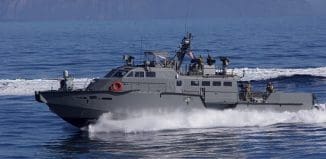New-Old Borders in the Middle East
This post is also available in:  עברית (Hebrew)
עברית (Hebrew)
By Yoel Guzansky and Erez Striem
Although the formal map of the Middle East has not changed since the onset of the socalled Arab Spring (with the exception of Sudan), the old borders do not reflect the reality on the ground. As a result of the regional upheavals, tribal, sectarian, and ethnic identities have become more pronounced than ever, which may well lead to a change in the borders drawn by the colonial powers a century ago that have since been preserved by Arab autocrats. The iron-fisted Arab rulers were an artificial glue of sorts, holding together different, sometimes hostile sects in an attempt to form a single nation state.

Now, the de facto changes in the Middle East map could cause far-reaching geopolitical shifts affecting alliance formations and even the global energy market. Syria, for example, encompasses different communal groups and is currently divided into at least three political entities, each with its own armed forces: (a) a corridor going from the south, through Damascus, Homs, and Hama to the northern coast of the Mediterranean, controlled by the Assad regime and the Alawites; (b) northern areas of the country and major cities such as Idlib and Dir a-Zor controlled by various Sunni opposition forces, with the battle over other cities – including Aleppo and Damascus – not yet decided; and (c) the areas under Kurdish control. Sunni opposition forces are split among those who advocate the establishment of a democratic, liberal state in Syria, and those interested in the establishment of an Islamic emirate. Several of these groups, including elements from outside of Syria, are already caught in a violent struggle.
The Kurds in Syria are likely to try to establish an independent political entity in the areas under their control. Unlike other minorities in Syria, the Kurds (numbering about 3 million and in control of most of Syria’s oil reserves) have suffered much persecution.
The Kurdish militias have exploited the chaos in the country and seized control of areas in the northeast abandoned by the Syrian army. Senior Kurdish officials have declared that the Kurds are interested in establishing an independent zone, and the Kurdish National Council, a representative body comprised of most of the Kurdish political parties, signed an agreement with the Syrian National Council whereby the Kurds would enjoy some type of autonomy in the future united Syrian state. But until Syria unites again it may be that Kurdish autonomy will be a fait accompli. At the same time, this possibility is overshadowed by divisions among the Kurdish organizations, some of which are supported by elements outside of Syria.
The possible model of independent Kurdish autonomy in Syria is anchored in the successful model of Kurdish autonomy on the other side of the border, in Iraq. While the Kurds in Iraq continue to take an active part in the country’s political process, Kurdistan is enjoying self-government in almost every aspect of life. The district is run by an independent parliament, and the Kurdish armed forces are separate from Iraq’s security establishment. In recent months, and to Baghdad’s chagrin, Kurdistan has even started to sign independent oil and gas discovery and production contracts with foreign energy companies. The Kurdish zone enjoys the highest levels of security and economic growth in Iraq and provides training and arms support to the Kurds in Syria.
Other parts of Iraq are also suffering from uncertainty. Since the withdrawal of the US forces, the violent sectarian struggle has intensified. The ongoing frustration of the Sunnis, who were cut out of the country’s leadership, has been manifested in deadly attacks on Iraqi cities at a frequency and intensity not seen since 2008. Islamist elements from Syria and Iraq that have joined forces have increased the risk of a destructive civil war. Iraqi nationalism is still dominant in Iraq and significant separatist movements are not prevalent, but the notion of a federalized entity has gained acceptance in recent years.
In fact, the Iraqi constitution allows for provinces to assume a certain amount of selfgovernment. As early as 2011, four Sunni provinces decided to begin a process that would culminate in their autonomy, despite Baghdad’s disapproval. In recent years, many Sunni and Shiites politicians have called for separation from the Iraqi state, following the Kurdish model. Continued sectarian violence could result in a divided Iraq, and ultimately in the dissolution of the Iraqi state, leading to a de facto Sunni state, with the south of Iraq becoming a Shiite state under Iranian patronage.
IHLS – Israel Homeland Security
Libya too is disintegrating. The Libyan uprising was primarily aimed at Qaddafi’s regime, but it also reflected Benghazi’s desire to end to the dominance of the central government in Tripoli. Historically, the borders of the Libyan state encompass three different ethnic groups in three distinct regions: Tripolitania in the country’s northwest; Cyrenaica in the east, which sees Benghazi as its capital and is home to most of the nation’s oil reserves; and Fezzan in the southwest. Cyrenaicans feel that, similar to the situation under Qaddafi, the current government in Tripoli is hoarding most of the income from oil exports, even though some 80 percent of the country’s energy resources are located in the east. Indeed, Cyrenaica has already started its separation from the Libyan state and maintain an independent parliament, and this past June, it declared its independence. Cyrenaicans have also shut down activity in the oil fields and the Benghazi airport to protest government policy; Libya’s three important seaports have been seized by armed militias that obstruct operations, and militia fighters have taken control of several oil and gas complexes. In October, Cyrenaica appointed a commander-in-chief for its 20,000-strong defense forces, whose job will be to restore order to a region suffering from extreme instability. For its part, Fezzan encompasses many different tribal and geographical identities. The district, whose culture, tribes, and identity are more Sahel than North African, declared independence in September. The central government in Tripoli does not recognize the autonomy of the different districts but lacks the power to impose its sovereignty.
Other nations lacking cohesive identity are similarly vulnerable. In March 2013, Yemen embarked on a national dialogue in order to arrive at an agreement over a new political order, but the situation in practice does not allow for Sana’a to regain full control over all parts of the state, and thus current ideas speak of a federal constellation. Some in South Yemen insist on severing ties fully with the Yemeni state; in fact, the status of the south is the biggest obstacle to the success of the national dialogue. In the north, the Houthis, an insurgent Shiite group, have seized Sa’da Province on the Saudi border, and are working to expand their control of neighboring provinces while fighting Sunni salafis from Yemen and abroad. Yemeni security forces are still fighting al-Qaeda for control of parts of the south. Even if the national dialogue succeeds and Yemen embarks on a new course as a united or federal state, there are enclaves that remain beyond Sana’a’s effective control.
The disintegration of states represents at least a temporary deterioration in Israel’s strategic situation because it is attended by instability liable to trickle over into neighboring states. Terrorism, crime, refugees, and weapons proliferation are only some of the implications of failed states in Israel’s vicinity. But the changes also mean dissolution of the regular armies that posed a threat in the past and present opportunities for Israel to build relations with different minorities with the potential to seize the reins of government in the future.
The changes to date have occurred inside the existing borders, but this may not last. States are liable to disintegrate by going through stages of federalization, agreed-upon separation, or autonomy. Independent political entities that are not recognized either internationally or by the central government may arise. There are also elements capable of preventing the dissolution of states, e.g., assistance by external states interested in stability, like in Yemen, or a shared interest, such as the oil energy sources in Iraq. In general, the international community is opposed to any changes in borders and the dissolution of states, because of the view that any change of the status quo is liable to destabilize the region and even the world. However, in the context of the regional turmoil, the Arab peoples are seeking the freedom to live in political settings that suit their respective identities.
INSS Insight No. 486, November 19, 2013






























